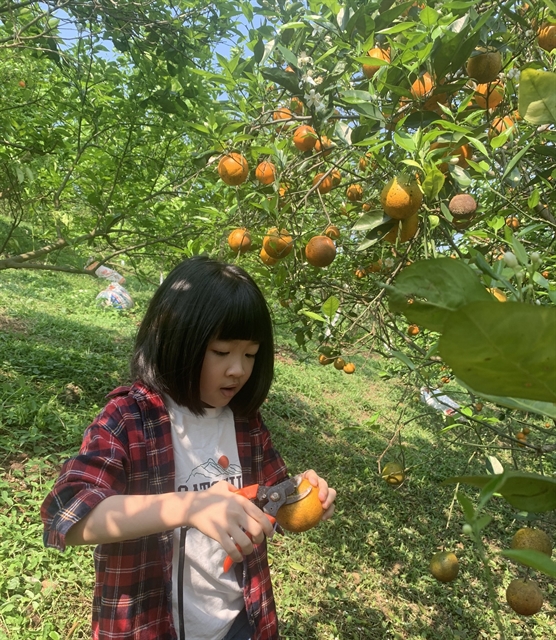 Life & Style
Life & Style

During the ripening orange season, most farms are open for visitors to freely explore and enjoy the awe-inspiring landscapes of immense golden orange hills, as well as experience fruit picking and watch the orange’s preliminary process.
Trần Khánh An
HÒA BÌNH – About 1,350 hectares of Cao Phong's juicy oranges have been ready for picking since the beginning of December, attracting numerous visitors, coming to tease their taste buds with the citrus’s juicy sweetness.

|
| A visitor takes photos at the Cao Phong orange orchard. – VNS Photo Trần Khánh An. |
Cao Phong District in the northern province of Hòa Bình, about 80 kilometres from Hà Nội, is the citrus paradise of the North. Its renowned oranges have been recognised through geographical indications in Việt Nam and Europe – a crucial and highly valued certification chosen by both the government and consumers.
The uniqueness of Cao Phong oranges is their gently sweet flavour combined with a hint of sourness – just enough to give the fruit a subtle tang.
During the ripening orange season, most farms are open for visitors to freely explore and enjoy the awe-inspiring landscapes of immense golden orange hills, as well as experience fruit picking and watch the orange’s preliminary process.
Due to her passion for photography, Trần Minh Huyền, 49, a tourist from Hà Nội, came to Cao Phong with her friends.
“My interest in visiting the orange orchard stems from the opportunity to harvest perfectly ripe oranges myself and savour authentic Cao Phong citrus straight from the tree – an experience that not everyone encounters frequently,” she said.

|
| Cao Phong Orange Orchard is a perfect location for a picnic, providing a wonderful opportunity to connect with nature while spending quality time with loved ones. – Photo courtesy of 3T Farm. |
“Since the beginning of December, our farm has open for free and has welcomed around a hundred visitors each week to ‘check-in’ and savour the citrus,” Đỗ Ngọc Hà, a farmer in Cao Phong District, said to Việt Nam News.
“Following the VietGAP standards, we incorporate organic fertilisers and biological agents to protect the biodiversity, which also enhances the landscape and attracts visitors.”
“Every Wednesday, my farm welcomes hundreds of primary and secondary school students to visit and learn about the citrus in the area. Children from the city are excited to experience the work of a farmer watering plants and picking fruit,” Thảo, the next-door farmer with Hà added.
Vũ Thị Lệ Thủy, CEO of 3T Farm agricultural cooperative, highlighted tourism activities at Cao Phong Orange Orchard as a way to promote the local citrus brand as well as the quality of the citrus products.
“The general public often misunderstands Cao Phong orange as a distinctive orange variety, however, the brand refers to all citrus varieties grown in Cao Phong District,” she said.

|
| Children pick perfectly ripe oranges themselves at the Cao Phong orange orchard. – Photo courtesy of 3T Farm. |
According to statistics from the Cao Phong administration, in the first six months of this year, the district welcomed over 200,000 visitors, an increase of 135 per cent over the same period last year.
Phạm Ngọc Nhất, Head of the district's Culture and Sports Department, highlighted the orange orchard tourism in promoting the local specialities, as well as enriching the diversity of Hòa Bình tourism.
Despite its potential, agritourism in Cao Phong in particular and the province as a whole is carried out haphazardly by households – its scope and level are not standardised.
The district's goal is to develop an organised and systematic agritourism system. Orange picking tours should be closely connected to other tourist attractions and tour routes in the province and district, like the Mường community-based tourism villages, the Vietnamese Scientists' Historical Park, and other scenic local destinations.
“We frequently recommend tourists visit neighbouring tourist attractions like the Kim Bôi mineral spring or the Mường tourism villages,” Thủy said. – VNS




